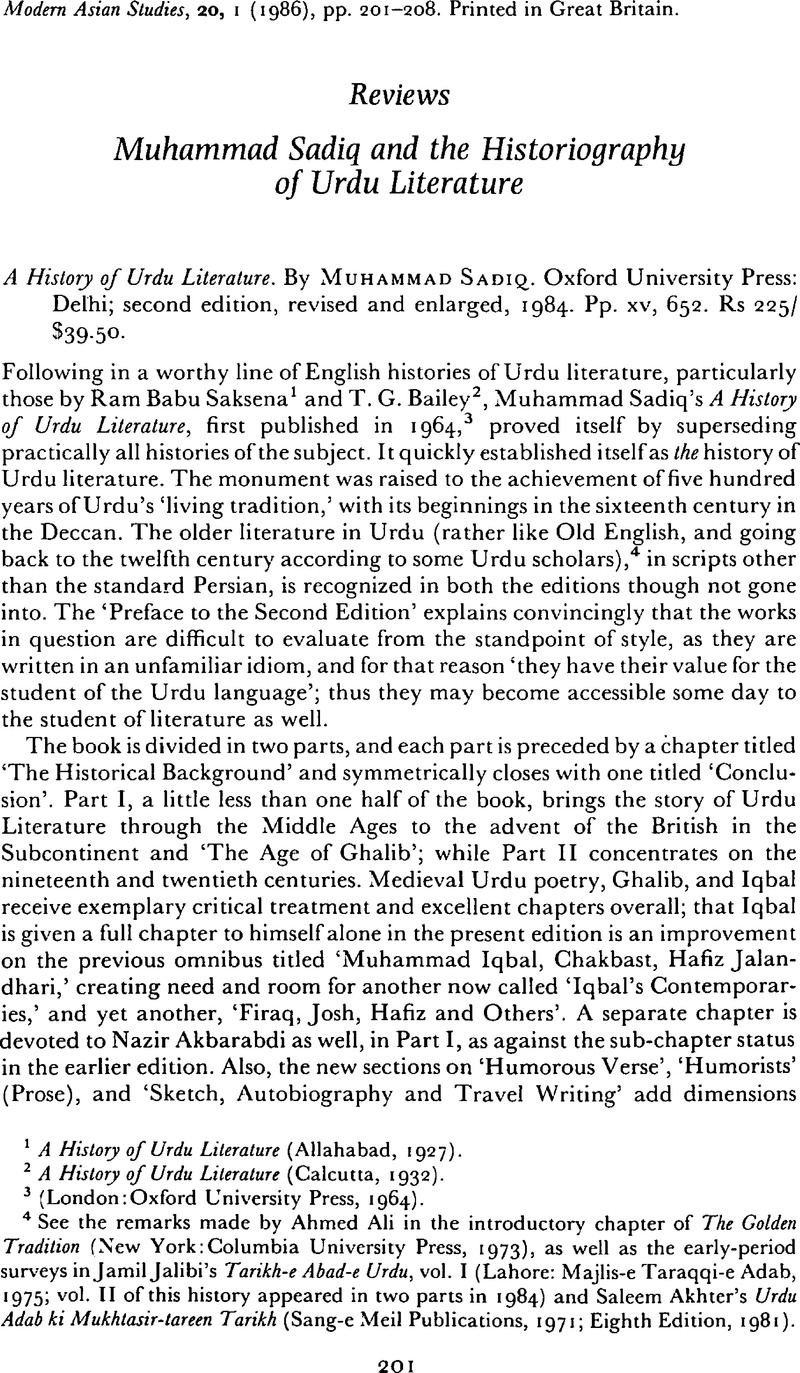Article contents
Muhammad Sadiq and the Historiography of Urdu Literature - A History of Urdu Literature. By Muhammad Sadiq. Oxford University Press: Delhi; second edition, revised and enlarged, 1984. Pp. xv, 652. Rs 225/$39.50.
Published online by Cambridge University Press: 28 November 2008
Abstract

- Type
- Reviews
- Information
- Copyright
- Copyright © Cambridge University Press 1986
References
1 A History of Urdu Literature (Allahabad, 1927).Google Scholar
2 A History of Urdu Literature (Calcutta, 1932).Google Scholar
3 (London:Oxford University Press, 1964).
4 See the remarks made by Ahmed Ali in the introductory chapter of The Golden Tradition (New York: Columbia University Press, 1973)Google Scholar, as well as the early-period surveys in Jalibi's, JamilTarikh-e Abad-e Urdu, vol. I (Lahore: Majlis-e Taraqqi-e Adab, 1975; vol. IIGoogle Scholar of this history appeared in two parts in 1984) and Saleem Akhter's Urdu Adab ki Mukhtasir-tareen Tarikh (Sang-e Meil Publications, 1971; Eighth Edition, 1981).
5 (Baroda, India:Padmaja Publications, 1947).
6 Ibid.
7 Toronto, , vol. 1, no. 2 (Summer 1982), p. 96.Google Scholar
8 Chicago, no. 4 (1984), p. 126.Google Scholar
9 (Aligarh, India, 1972).
10 Unpublished Ph.D.diss., University of Chicago, 1975.Google Scholar
11 (Lahore, Pakistan, 1984).
12 ‘General Introduction’, A History of English Literature, Revised Edition, translated from French by Irvine, Helen Douglas (London:J.M. Dent & Sons Ltd, 1930Google Scholar, with major revisions and additions in 1954, 1957, 1964 and 1967).
13 Urdu writers of European origin, particularly during the two centuries up to 1947 also belong to the history of Urdu Literature, and Ram Bahu Saksena pioneered such scholarly interest with his European and indo-European Poets of Urdu and Persian (Lucknow, 1941)1, and a recent special issue of the magazine Afkar (Karachi, no. 133, April 1981) acknowledged their significance by publishing a fine article and selections from the work of these poets.Google Scholar
- 1
- Cited by


